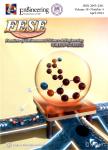Removal of sulfamethoxazole and trimethoprim from reclaimed water and the biodegradation mechanism
作者机构:School of EnvironmentTsinghua UniversityBeijing 100084China The Institute of Crustal DynamicsChina Earthquake AdministrationBeijing 100085China The College of Urban and Environmental SciencesPeking UniversityBeijing 100871China Appraisal Center for Environment &Engineering Ministry of Environmental ProtectionBeijing 100012China State Key Laboratory of Simulation and Regulation of Water Cycle in River BasinChina Institute of Water Resources and Hydropower Research (IWHR)Beijing100038China Chinese Academy of Geological SciencesBeijing 100037China
出 版 物:《Frontiers of Environmental Science & Engineering》 (环境科学与工程前沿(英文))
年 卷 期:2018年第12卷第6期
页 面:61-68页
核心收录:
学科分类:12[管理学] 1201[管理学-管理科学与工程(可授管理学、工学学位)] 08[工学]
基 金:the Major Science and Technology Program for Water Pollution Control and Treatment (No. 2017ZX07202002) Beijing Natural Science Foundation (No.J150004) Key Technology and Project of Jinan Water Environment Control (No.201509002) National Key Research and Development Plan (No.2017YFC0406104)
主 题:Trimethoprim Sulfamethoxazole Biodegradation Aerobic nitrification
摘 要:The artificial composite soil treatment system could efficiently remove SMX and TMP by biodegradation mechanism. Bacillus subtilis from column reactors degraded SMX and TMP efficiently. Bacillus subtilis biodegrades TMP to NH4+, and then converts NH4+ to NO3–.



